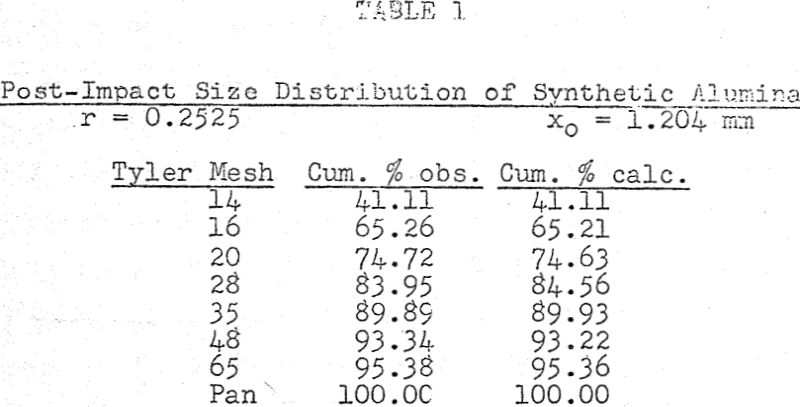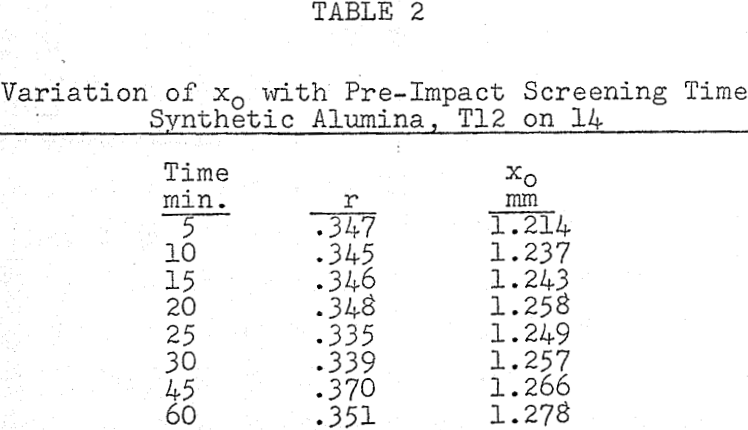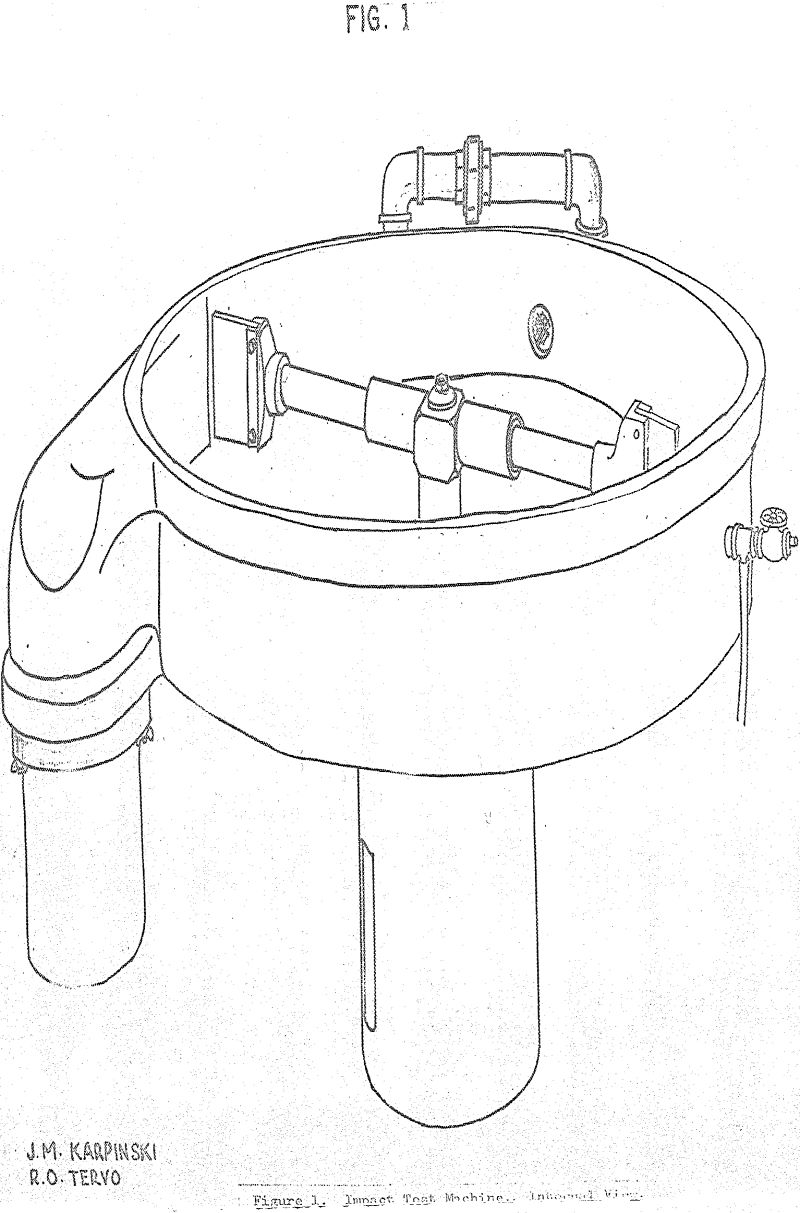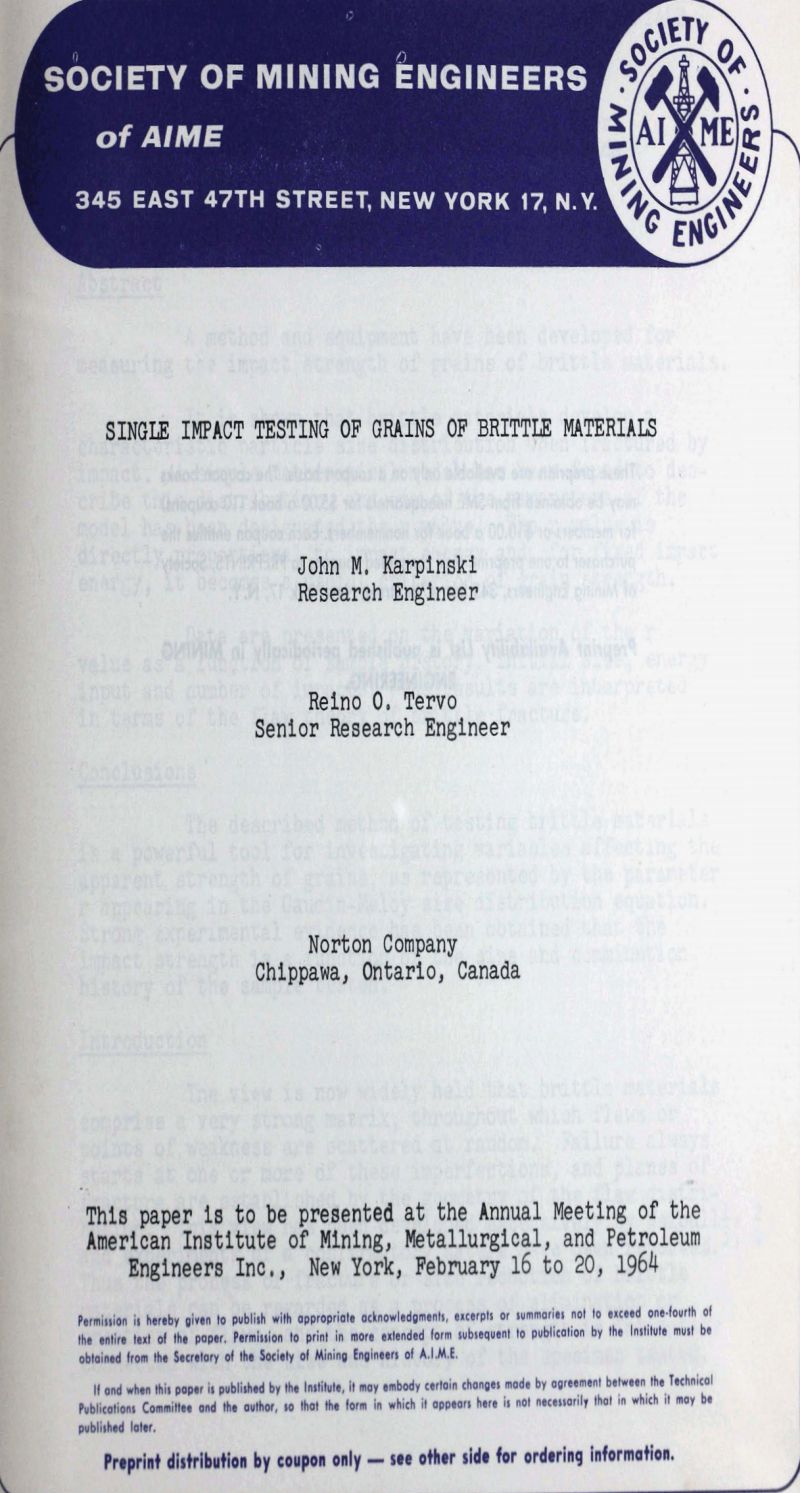Table of Contents
A method and equipment have been developed for measuring the impact strength of grains of brittle materials. It is shown that brittle materials develop a characteristic particle size distribution when fractured by impact. A simple mathematical model has been found to describe this distribution, and one of the parameters of the model has been designated the r value. The r value is directly proportional to impact energy and, for fixed impact energy, it becomes a useful criterion of grain strength.
Impact Test, Machine and Testing Procedure
The impact test machine has been designed to feed specimens, essentially one at a time, into an evacuated chamber, where they fall freely and are struck with random orientation by one or the other of a pair of flat steel vanes. The vanes are mounted at opposite ends of a steel bar, which rotates at a closely controlled angular velocity about a vertical axis. The cylindrical pot in which the grains are collected after impact appears at the left.
A sample of grain is prepared from larger pieces of the brittle material by some method of controlled crushing. The test sample comprises the part of the crushed material that is retained between two specified adjacent screens in the Tyler series, after screening for one-half hour with a Tyler Ro-Tap sieve shaker, The weight of the test-sample is selected to give at least 10,000 specimens for testing. The grains are fed into the machine at a rate dependent on the angular velocity of the steel vanes.
Experiments on Identical Samples
A large lot of synthetic alumina was roll crushed and split into a large number of small samples. These samples were then used in the following two experiments.
(a) Gross Reproducibility
Each sample was screened separately and different grits were tested at a constant speed of 157 ft./sec. For the T20 on 24 grain with r in the range from 0.25 to 0.30 the testing process itself including screening, showed a 95% confidence interval of ± 3.5%.
(b) xo and r as Functions of Screening Time
Each sample was screened for a different length of time and the obtained grits were tested at a constant speed of 157 ft./sec.
(c) r as a Function of Size
The well-defined decrease in r with decreasing size leads us to the conclusion that r is inversely proportional to the apparent strength of specimens. This follows directly from the flaw theory of brittle fracture.
(d) r as a Function of Impact Energy
It is intuitively obvious that the degree of grain breakdown increases with the force of impact and r is therefore a function of impact energy.
Experiments on Materials with Variable Parameters
Under this heading we discuss the variation of r with chemical composition, crystal size thermal treatment, and, finally, the comminution history of the sample.
Even though all the test samples were prepared in an identical manner (very closely controlled roll crushing), the fact that we went through the same motions does not mean that any specific grits of two different materials have had the same comminution history.
Two inch pieces of synthetic alumina were crushed with a jaw crusher followed by roll crushing. In one case the rolls were choke fed and in the other the rate of feed was very slow. The r values of the T20 on 24 grit were markedly different.





